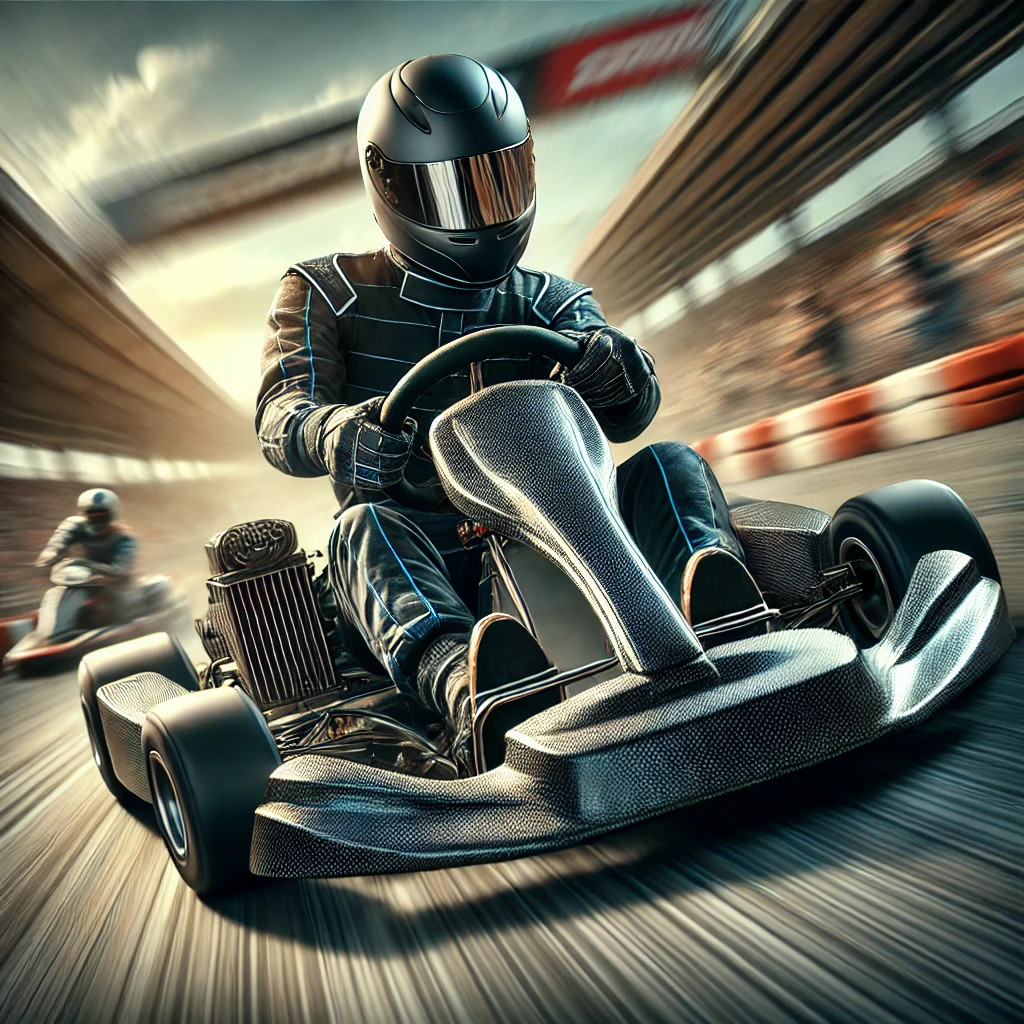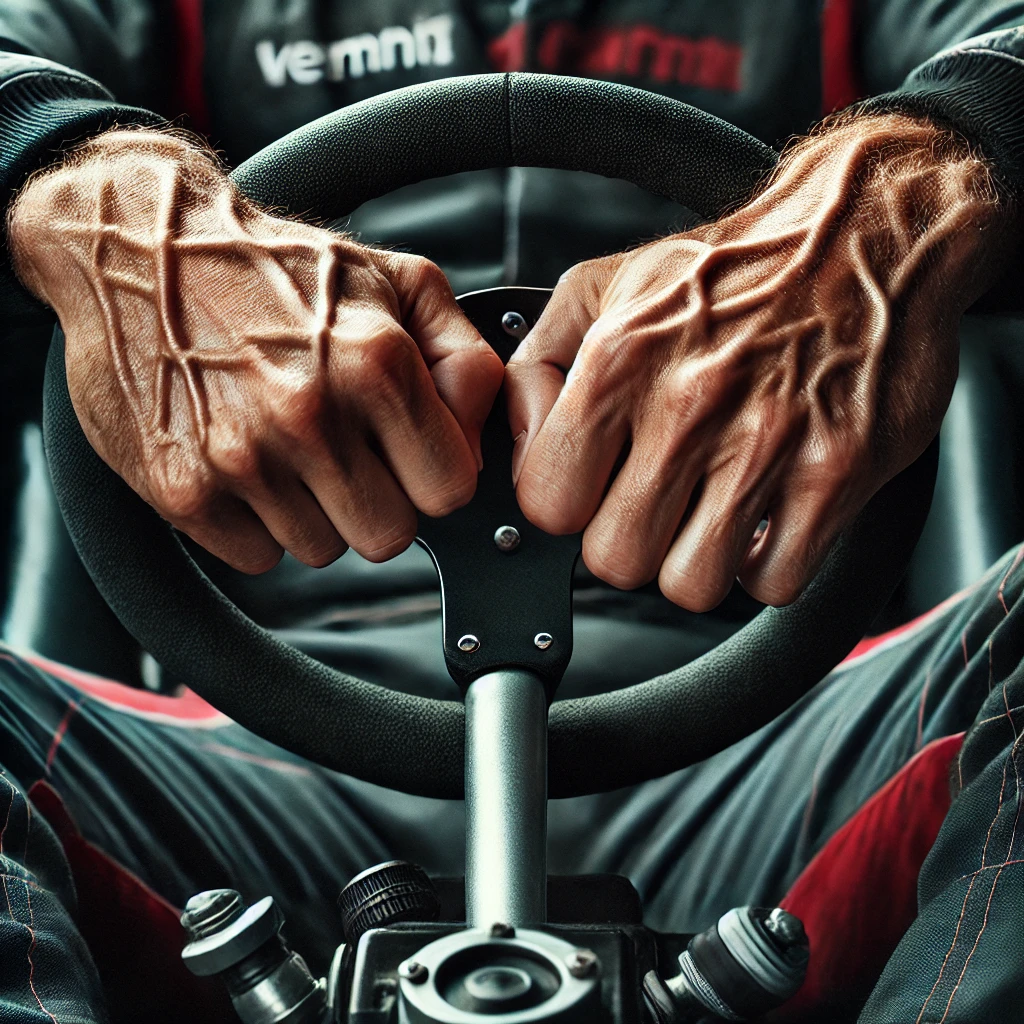Go-karting might appear to be a simple and fun activity, but it’s physically demanding in ways that often surprise first-time drivers. While the karts are smaller and slower than full-size race cars, they exert significant pressure on your body, particularly due to the G-forces experienced when cornering, braking, and accelerating. The combination of these forces, along with the mental focus required to maintain control, makes go-karting more exhausting than it seems at first glance.
1. High G-Forces and Physical Strain

One of the primary reasons go-karting is physically tiring is the exposure to high G-forces, particularly when taking sharp turns. G-forces are the forces of gravity that act on your body when the kart changes direction or speed rapidly. These forces push your body in various directions, which requires substantial muscle engagement, particularly in the neck, shoulders, arms, and core.
How G-forces affect the body:
- Cornering: When a kart takes a corner at high speed, lateral G-forces push your body sideways. To maintain balance and control, your core and upper body must work hard to counteract these forces and keep you properly seated.
- Braking: Hard braking creates forward G-forces, pushing your body into the steering wheel or seatbelt. Your arms and legs must brace to absorb the impact and stabilize your body.
- Acceleration: Exiting a corner at speed produces backward G-forces that challenge your core muscles to keep you upright in the seat and prevent you from being thrown backward.
Why it’s tiring: The constant challenge of counteracting G-forces takes a toll on your body’s muscles. Over time, this strain leads to muscle fatigue, particularly in your core, neck, and arms, making go-karting much more exhausting than it may initially seem.
2. Steering Without Power Assistance
One of the most physically challenging aspects of go-karting is the lack of power steering. Unlike regular road cars, which have power-assisted steering to make turning the wheel easier, go-karts require all the effort to come directly from the driver’s arms, shoulders, and chest muscles. The karts are designed to respond immediately to steering input, which enhances precision but increases the physical demand on the driver, especially at higher speeds or on tracks with many tight corners.

How steering affects the body:
- Arm and shoulder fatigue: Consistently turning the wheel, particularly on a track with numerous twists and turns, puts significant strain on the arm and shoulder muscles. The faster you drive, the more resistance you encounter, which requires even more effort to maintain control.
- Upper body endurance: Over the course of a long race or practice session, your upper body muscles, especially in the shoulders and chest, must work continuously to maneuver the kart. As the session progresses, fatigue sets in, making it harder to control the kart with precision.
Why it’s tiring: Without power steering, even small steering inputs require considerable effort. The physical strain of constantly wrestling with the wheel, especially in longer sessions, leads to rapid muscle fatigue in the upper body, making it increasingly difficult to maintain control over time.
3. Constant Focus and Mental Strain
Go-karting is not only physically exhausting but also mentally demanding. Drivers must maintain unwavering concentration throughout the race, making quick decisions and thinking strategically. Even the slightest lapse in focus can result in errors, such as missing a braking point, underestimating a turn, or making a poor overtaking decision, which can compromise the race.
How mental fatigue affects your performance:
- Decision-making: Karting happens at high speed, and drivers need to make split-second decisions about when to brake, accelerate, or change their racing line. This level of mental sharpness requires intense focus, which becomes more difficult to sustain as fatigue sets in.
- Anticipating competitors: Racing with other drivers adds another layer of mental complexity, as you must keep track of their positions, anticipate their moves, and defend your own line without losing speed or control.
- Multi-tasking: While driving, you’re balancing many tasks at once—maintaining your speed, sticking to the optimal racing line, reacting to track conditions, and keeping an eye on competitors. This constant mental juggling is draining and can cause cognitive fatigue over the course of a race.
Why it’s tiring: The mental demands of karting accumulate quickly, and as your brain tires, your reaction times may slow, and your focus may wane, exacerbating the physical demands and making the entire experience even more exhausting.

4. Engaging Core Muscles for Stability
Your core muscles play a vital role in go-karting, as they help stabilize your body and keep you balanced during high-speed maneuvers. The constant movement of the kart—whether it’s turning, accelerating, or braking—forces you to engage your core muscles to stay upright and in control.
How the core is used in karting:
- Balancing the body: As the kart moves through turns, your body is pushed in various directions by the G-forces. To prevent sliding around in your seat, you must engage your core muscles to keep yourself centered.
- Absorbing impacts: Bumps, curbs, and track vibrations are common in karting, and your core helps absorb these impacts, preventing you from losing control or posture.
Why it’s tiring: Engaging your core muscles throughout the entire session takes a toll, especially when combined with the physical demands of steering and handling the kart. This continuous use of your core can lead to significant fatigue after just a few laps.
5. Handling the Vibration and Rough Terrain
Go-kart tracks are not always perfectly smooth. Many tracks have bumps, cracks, or curbs that create constant vibrations, which are transmitted directly through the kart’s seat and steering wheel. These vibrations put additional strain on your muscles and joints.

How track conditions impact fatigue:
- Vibration through the kart: The vibration from the engine and the roughness of the track surface can cause your arms and upper body to fatigue faster, as you’re constantly working to maintain control.
- Jarring movements: Hitting curbs or running over rough patches of track creates sudden jolts that your body needs to absorb, which can lead to increased wear and tear on your muscles and joints.
Why it’s tiring: The constant vibration and impact from the track can lead to increased fatigue in your arms, hands, and core, making it harder to maintain control over time.
6. Physical Endurance and Lack of Rest
Go-karting sessions can last anywhere from 10 minutes to an hour or more, depending on the type of race or practice session. The combination of high-speed driving, physical exertion, and mental focus means that the longer the session, the more fatigue sets in.
Endurance factors:
- Minimal breaks: Unlike many sports, karting offers little opportunity for rest once the race has started. You’re driving continuously, which doesn’t allow your muscles or mind to recover mid-session.
- High-intensity activity: Karting is a full-body workout, engaging your upper body, core, and legs. This intensity over a prolonged period leads to fatigue, especially for beginners who may not be used to the physical demands.
Why it’s tiring: The lack of rest during karting sessions leads to accumulated fatigue in both your muscles and your mind, reducing your ability to maintain peak performance.
7. Grip and Hand Fatigue

Your hands and wrists also bear a significant amount of stress during karting. Holding onto the steering wheel tightly for long periods, especially on a track with a lot of twists and turns, can cause hand and wrist fatigue.
How hand fatigue sets in:
- Constant grip: Drivers tend to grip the steering wheel tightly during races, especially when trying to control the kart through high-speed corners. Over time, this causes strain on the hands and forearms.
- Steering resistance: The lack of power steering means you need to apply more force to the wheel, which adds to hand fatigue.
Why it’s tiring: Prolonged gripping, combined with the resistance from steering, leads to significant hand and wrist fatigue, making it harder to maintain precise control.
8. Adrenaline and Stress
The adrenaline rush that comes with racing can also contribute to physical and mental exhaustion. Adrenaline puts your body into “fight-or-flight” mode, which temporarily boosts energy and focus, but when the rush fades, it often leaves you feeling drained.
How adrenaline affects fatigue:
- Heightened alertness: While adrenaline helps you stay sharp and react quickly, maintaining this heightened state of alertness for long periods is exhausting.
- Post-race fatigue: After the race, the adrenaline wears off, leading to a feeling of sudden fatigue as your body comes down from the high-intensity experience.
Why it’s tiring: The adrenaline rush is exhilarating but can lead to post-race fatigue, leaving you feeling physically and mentally drained after the session.
Karting as a Full-Body and Mental Workout
Go-karting may seem like a simple, fun activity, but it’s actually a full-body workout that tests your endurance, strength, focus, and reflexes. The combination of G-forces, constant steering, mental concentration, and the physical demands of stabilizing your body make karting more exhausting than many people expect.
How to manage fatigue:
- Stay fit: Building core and upper body strength through regular exercise can help you handle the physical demands of karting.
- Hydrate and fuel up: Drink plenty of water and have a balanced meal before karting to keep your energy levels up.
- Practice: The more you kart, the more your body will adapt to the physical and mental demands, improving your endurance over time.
Get the right preparation and mindset at Aruani Grid Motorsports Academy in Bangalore to be able to enjoy go-karting to the fullest while minimizing fatigue and maximizing your performance on the track.
